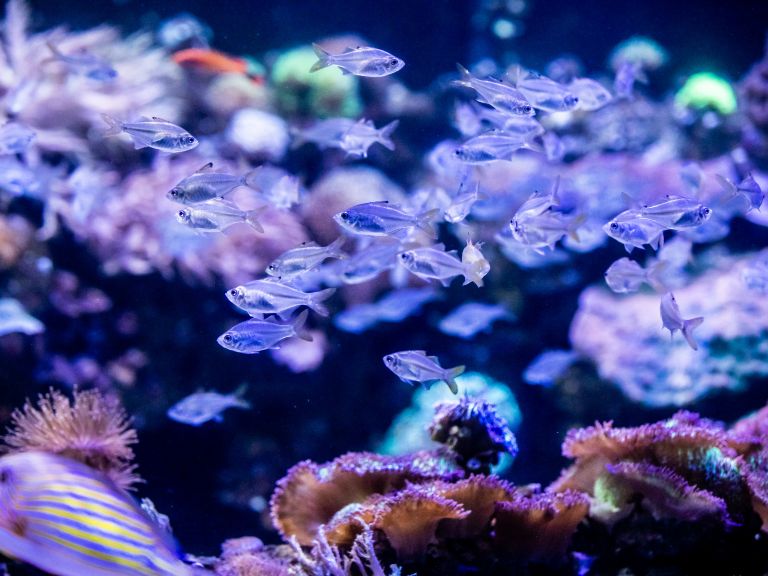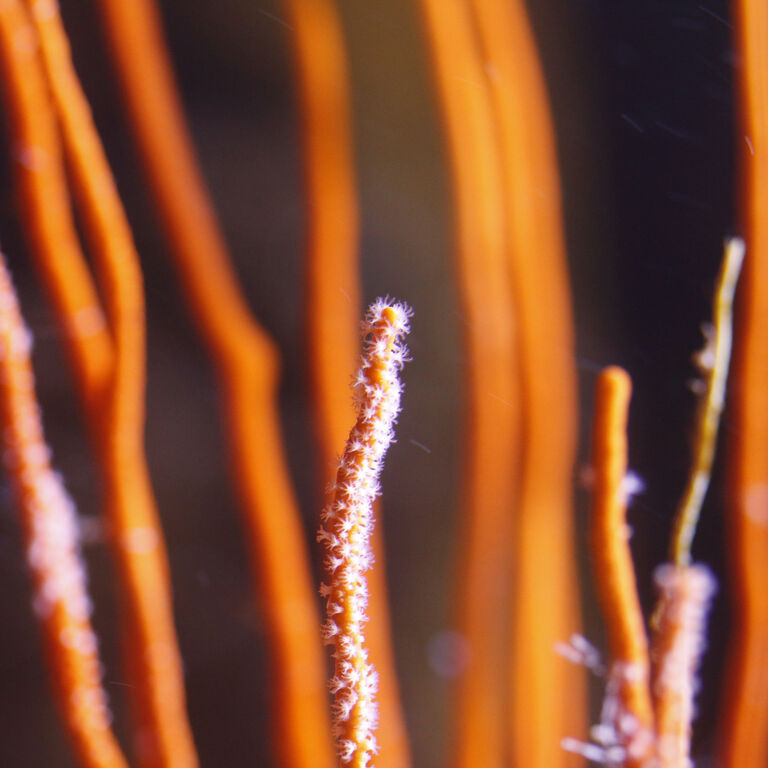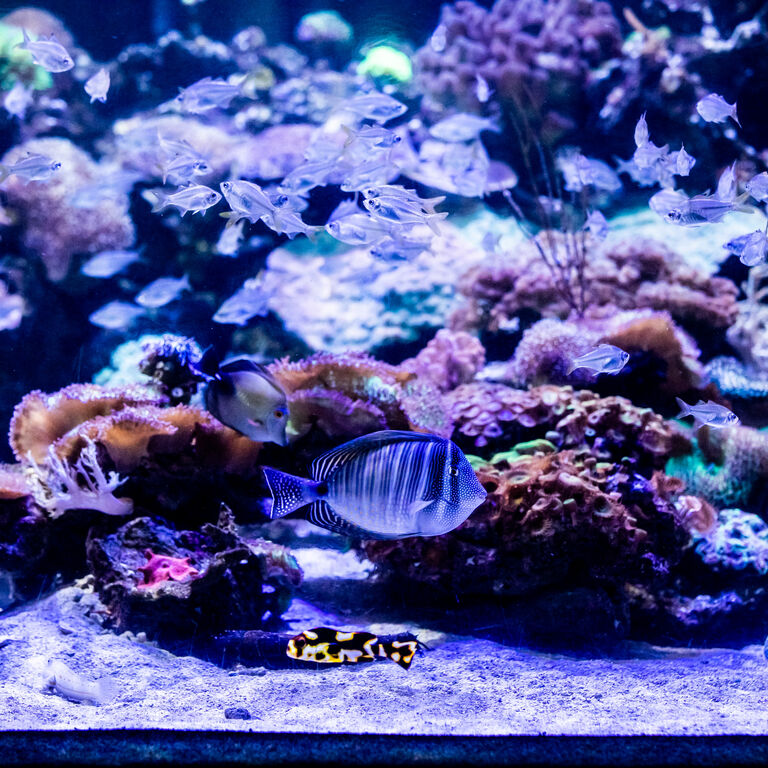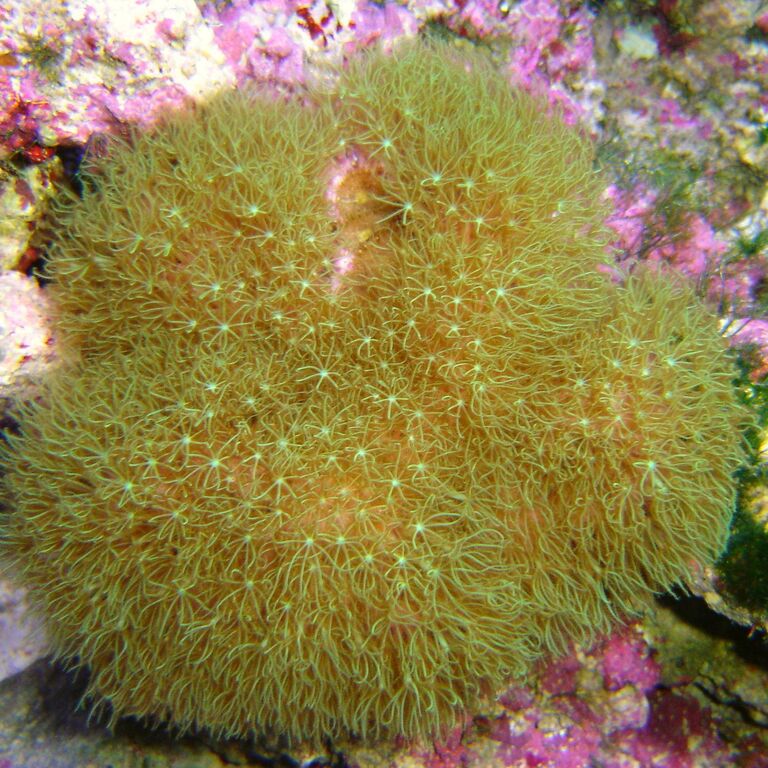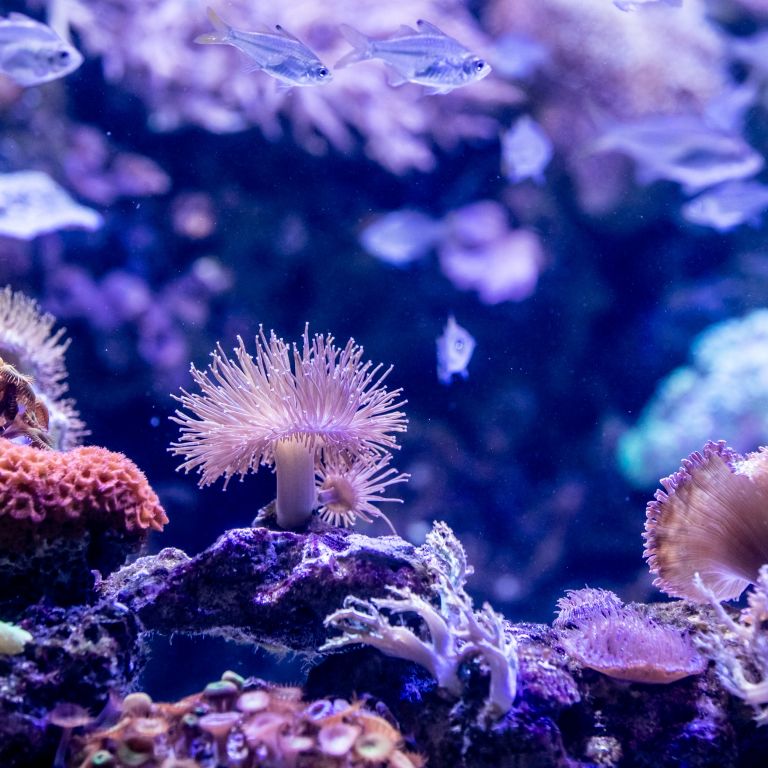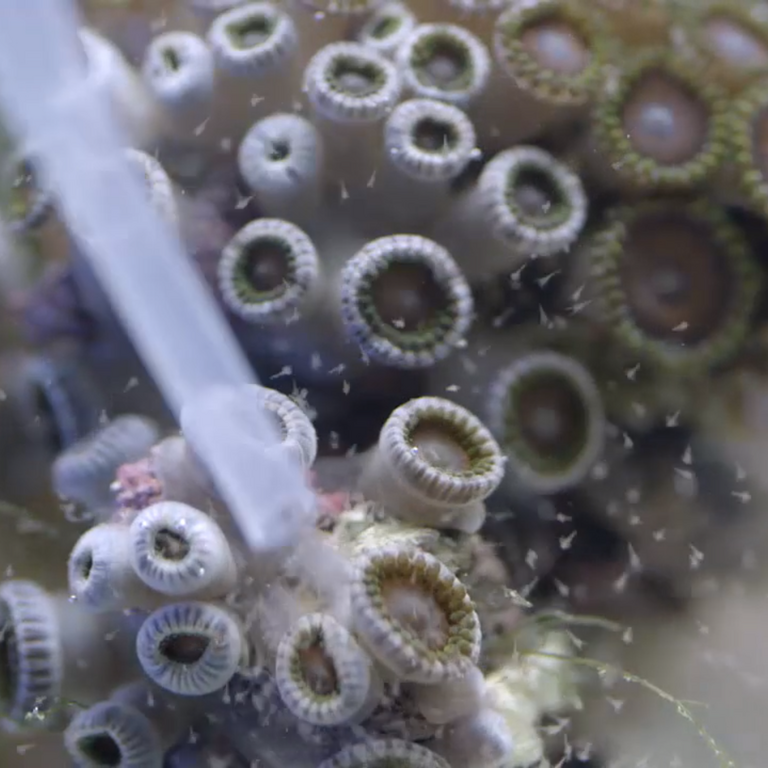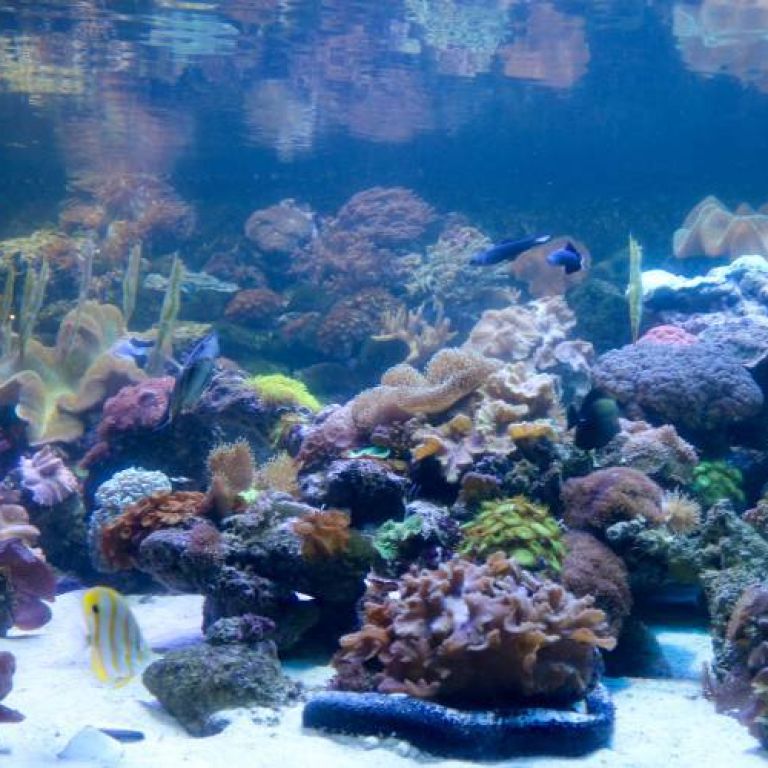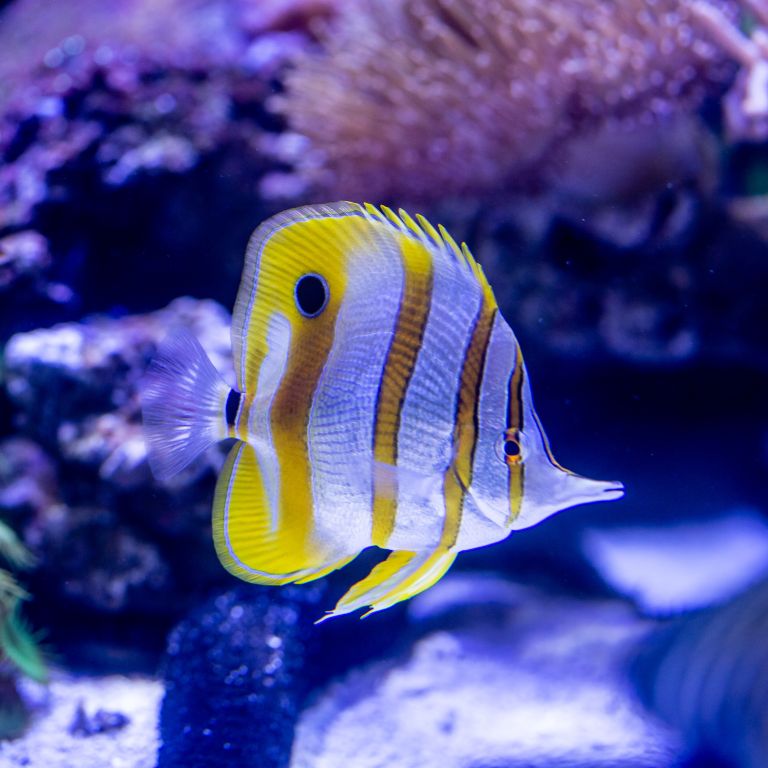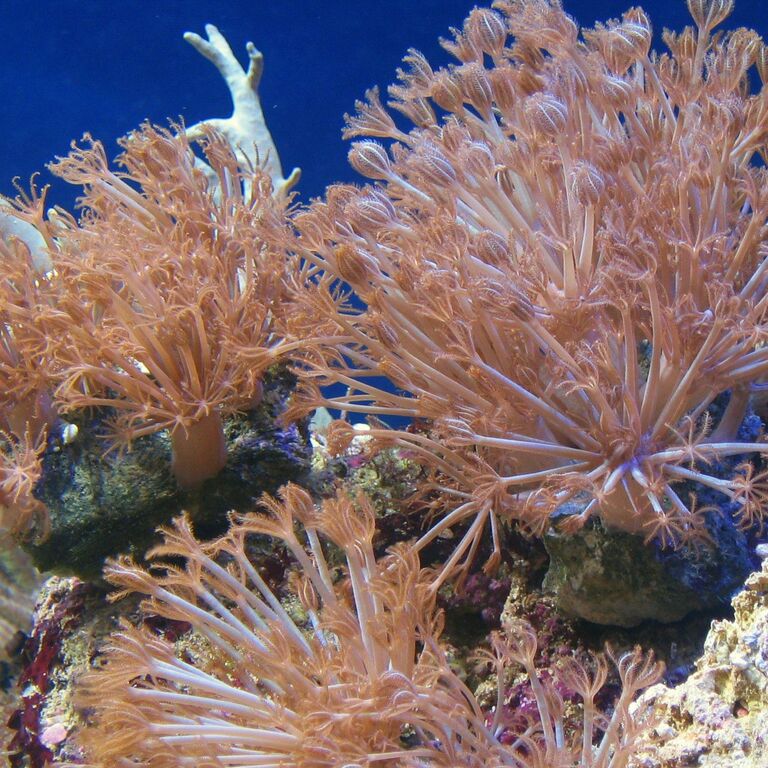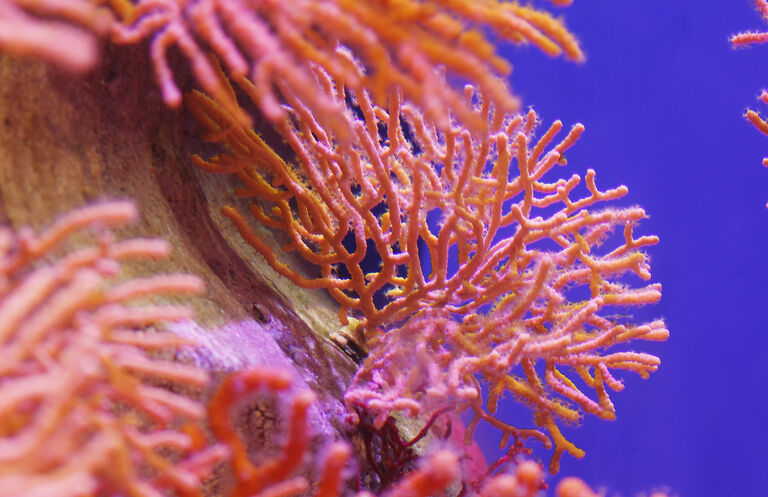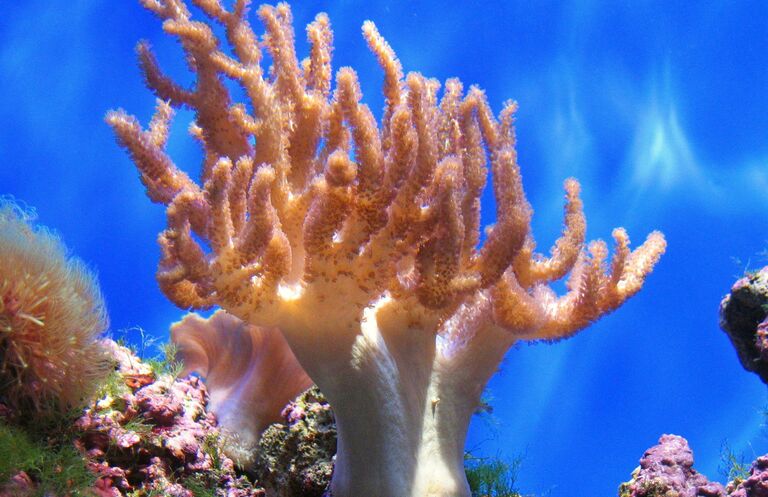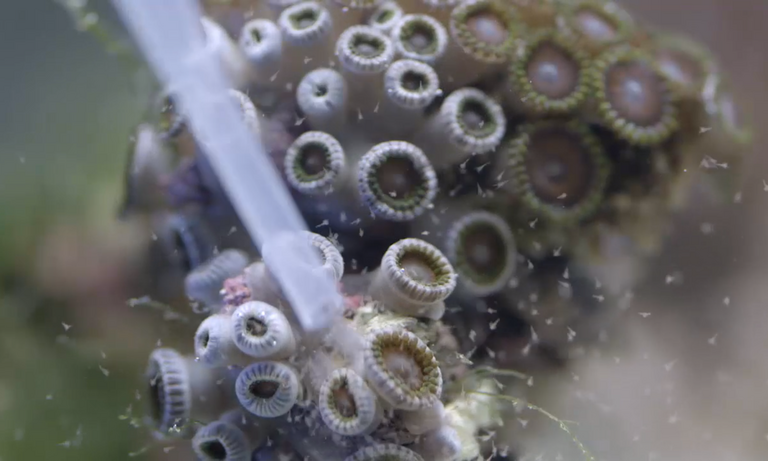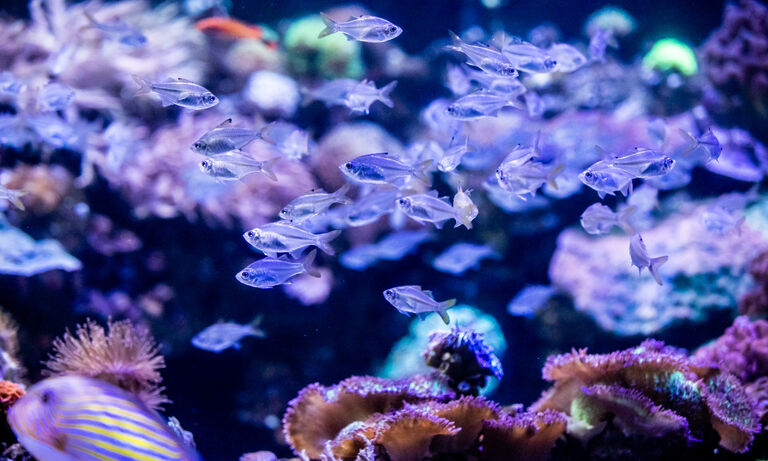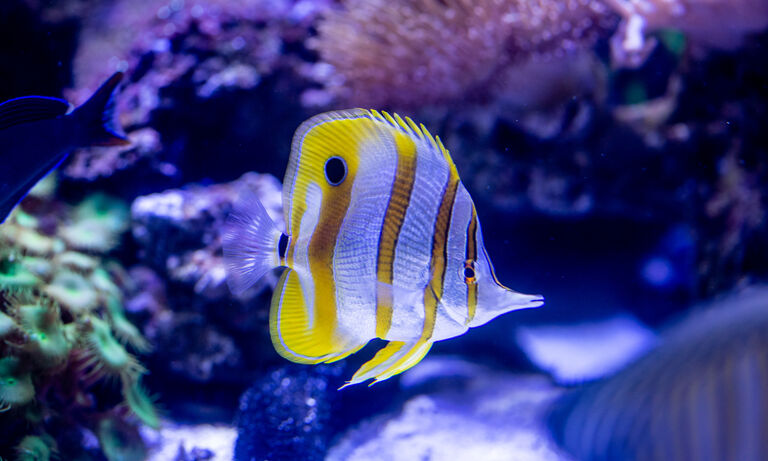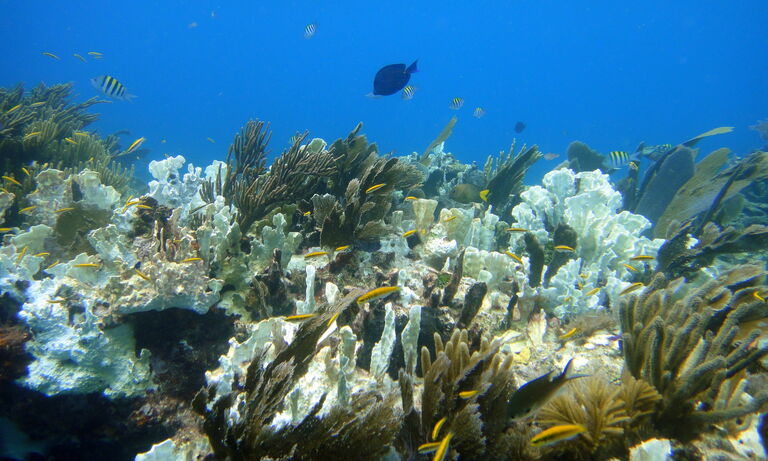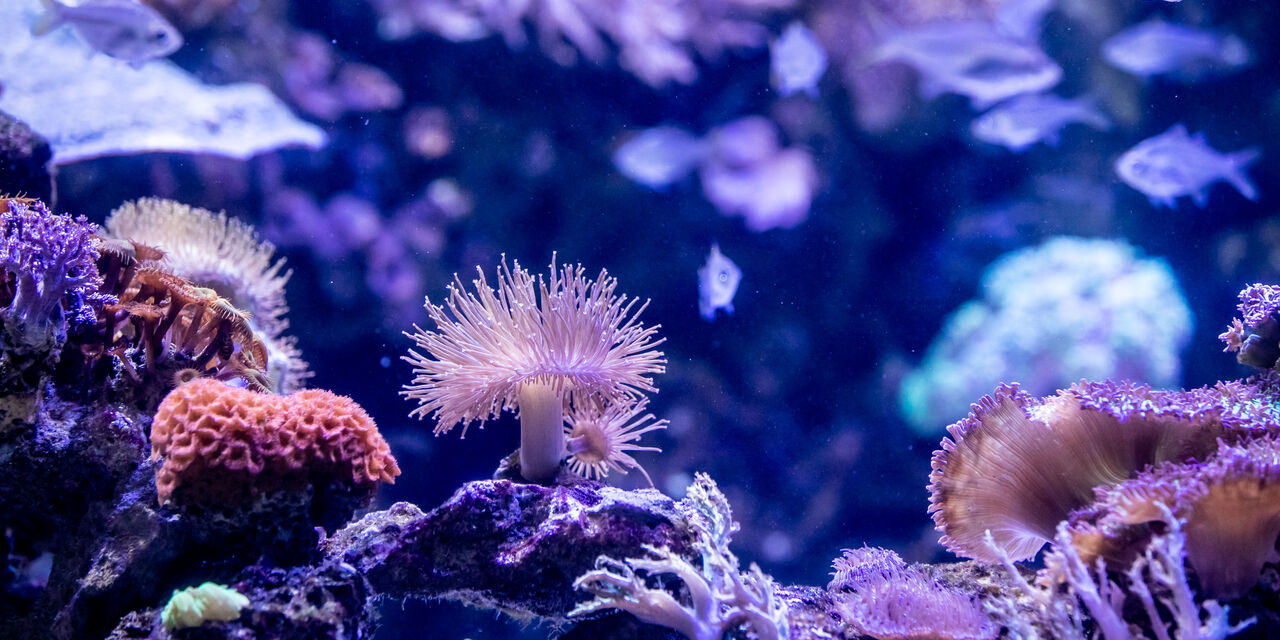
Coral reefs
Coral reefs first started appearing on Earth around 500 million years ago. Although coral reefs only occupy about 0.1% of the world’s oceanic area, they are believed to be the ecosystem with the highest biodiversity on the planet, providing a home for approximately 25% of all marine species. When visiting the Two Oceans Aquarium, be sure to stop by our beautiful coral reef exhibit. It is one of the first you will encounter. Also, peer into the amazing zooxanthellae exhibit. Here you will see how corals and zooxanthellae, brightly coloured microscopic algae, live together in a symbiotic relationship of colour and movement.
